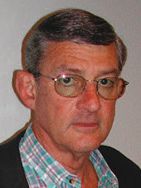Renewable energy—where’s the fit?
Dr. Robert M. Gresham, Contributing Editor | TLT Commentary September 2015
The goal of 20% electricity from renewable sources by 2030 is a challenging task but one that will yield ancillary rewards.

www.canstockphoto.com
KEY CONCEPTS
•
Recently Barack Obama announced the challenging goal of generating 20% of U.S. electricity from renewable sources by 2030.
•
John F. Kennedy’s man-on-the-moon challenge resulted in many new products, processes and scientific advances that still benefit mankind.
•
Tribologists will play an important role in determining future energy solutions.
OF LATE I’VE BEEN READING A BIT ABOUT RENEWABLE ENERGY. This is a subject that unfortunately has been politicized, making commentary often so hyperbolic that rational thought, analysis and science gets hopelessly obscured.
Among the rational, I don’t think anyone would dispute that human activity is producing an enormous number of BTUs of wasted energy in the form of heat or thermal pollution. And human activity is converting an enormous tonnage of carbon and hydrogen compounds into carbon oxides or carbon pollution. Since the consequences of these activities on mankind and the planet are not precisely known and predictable, the door is left open for hyperbole and politicization. Fine, let those who are “all sound and fury, signifying nothing” enjoy their sport.
Recently President Barack Obama announced the goal of generating 20% of U.S. electricity from renewable sources by 2030. I think the Bush administration actually had the same goal. For those of us who have been around a while, this is reminiscent of President Kennedy announcing, “I believe that this nation should commit itself to achieving the goal, before this decade is out, of landing a man on the moon and returning him safely to the Earth.”
Following Kennedy’s challenge was plenty of hyperbole about the worthlessness of the goal. Many thought leaving our planet was an affront to God.
In reality, we didn’t know how to put a man on the moon. NASA was only a three-year-old toddler. It took a lot of time and money and many, many inventions and innovations on different levels by many organizations both in the public and private sectors. We children were encouraged to take all the math and science courses we could. Colleges and universities suddenly had funding for their science and engineering programs. The result was, aside from actually putting a man on the moon, many new products, processes and scientific advances that are still benefitting mankind and the opportunity to conduct research in low Earth orbit, which is essentially weightless and in a near vacuum.
So I look at the goal of 20% electricity from renewable sources by 2030, hopefully without the prism of politics and hyperbole, and this is not an easy task in our times. Some thoughts emerge: first, this would be about triple the current amount of wind and solar generated electricity.
According to Rupert Darwall, author of The Age of Global Warming: A History, writing in the Wall Street Journal, there is no objective cost-benefit analysis that could justify this goal. Further, he refers to a Bill Gates interview in the Financial Times, where Gates states that current renewables are dead-end technologies. Wind and solar are unreliable, since they depend on output from the weather, which are inherently variable. Battery storage is inadequate. The cost of decarbonization using today’s technology is “beyond astronomical.” In a Google study, after seven years of investigation, Google engineers found no way to get the cost of renewables competitive with coal. Europe is about a decade ahead of the U.S. with a similar goal of 20% of all energy, but apparently it’s not going well, as Germany alone has invested about $440 billion and will invest $1.1 trillion by 2030. But due to the high and rising energy cost, the German industry is investing in capacity overseas and shutting down certain domestic operations. Well, you can certainly argue about the precision and accuracy of these assertions, but it is not really worth the energy. (That was sort of a pun.)
Well, when I think about all this, I’m reminded of the situation of the goal of putting a man on the moon. Kennedy’s goal was an outcome, not the method for reaching the goal. What we need to do is not try to regulate our way to reach the goal, we should not dictate what the solution to the goal should be and we should not subsidize companies that make or appear to make something we think is cool to reach the goal.
In other words, like Kennedy, we should not set goals that prescribe the solution. But rather, a clearly understood outcome that people can embrace. Organizations like DOE, EPA, NSF and the like should fund basic research in how to generate energy that has a sufficient density (very important) to create the massive quantities of energy that we as a society need and will need, while reducing or eliminating thermal and carbon oxide pollution. That is the real goal. This opens the door to thinking about sequestration and recycling as well as altogether new ways of generating energy.
Like putting a man on the moon, we need to think outside of the box to achieve this goal. And the added benefit will be new products, processes and scientific achievements that will enhance the general quality of life for mankind. Clearly some of these new advancements will have inherent tribological problems that will require new and innovative solutions to overcome. That would purport a good future for our STLE people.
 Bob Gresham is STLE’s director of professional development. You can reach him at rgresham@stle.org
Bob Gresham is STLE’s director of professional development. You can reach him at rgresham@stle.org.